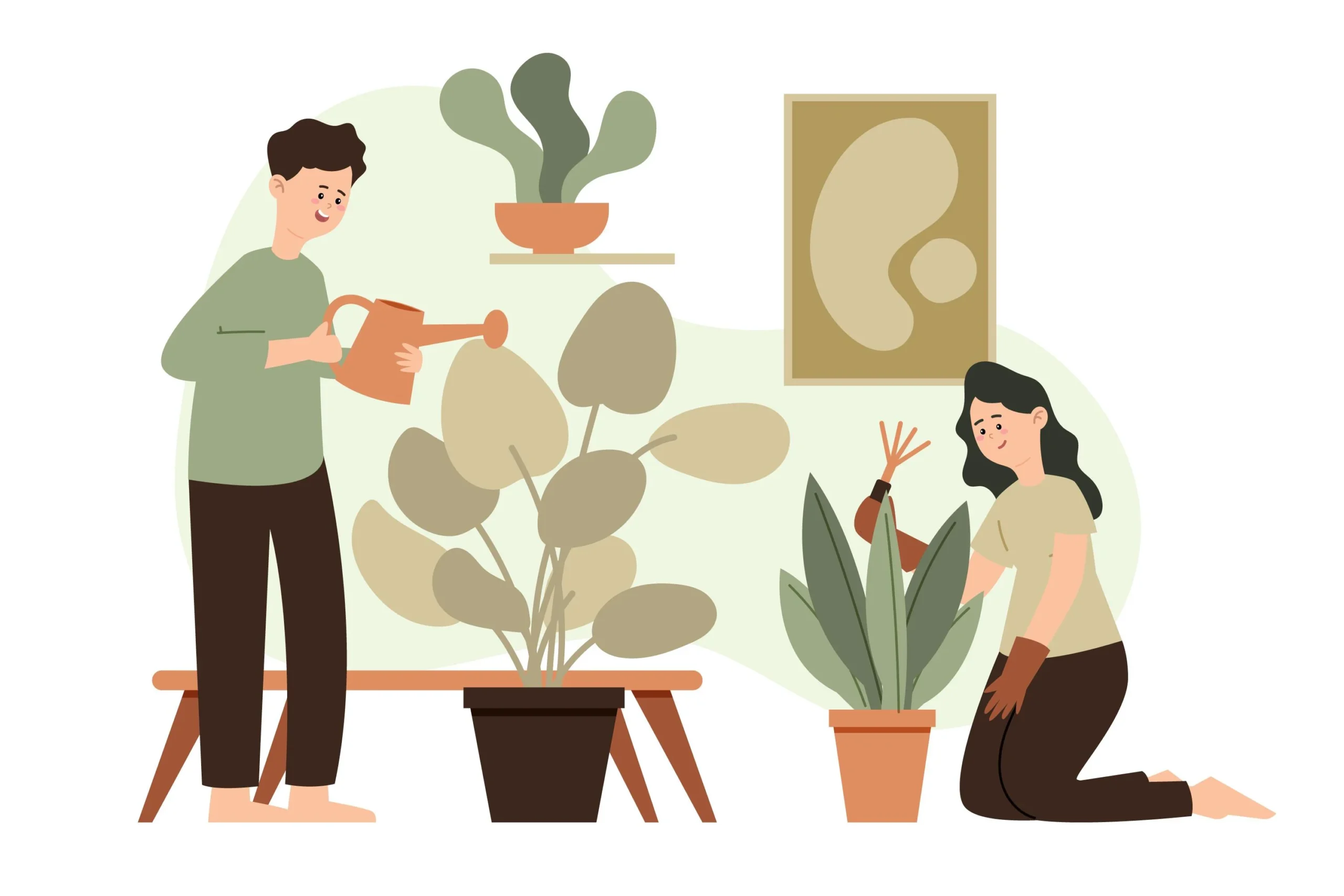Succulents are popular houseplants known for their unique shapes, vibrant colors, and ability to thrive in dry conditions. Their low maintenance needs and striking appearances make them ideal for both novice and experienced gardeners. However, even these hardy plants require proper care to flourish. In this article, we’ll explore the essentials of succulent care, covering everything from watering and soil to light and pest management.
Table of Contents
- Introduction
- Understanding Succulents
- Choosing the Right Succulents
- Essential Care Tips for Succulents
- Watering
- Soil
- Light
- Temperature and Humidity
- Potting and Repotting Succulents
- Common Pest Problems and Solutions
- Propagating Succulents
- Seasonal Care Tips
- Conclusion
Understanding Succulents
Succulents are a group of plants that store water in their leaves, stems, or roots, allowing them to survive in arid environments. They come in various shapes, sizes, and colors, making them an attractive choice for indoor and outdoor gardens. Common varieties include Echeveria, Aloe, Sedum, and Haworthia.
Why Choose Succulents?
- Low Maintenance: Succulents require less frequent watering and can thrive in various light conditions.
- Versatile Decor: Their unique forms add aesthetic value to any space, whether in pots, terrariums, or garden beds.
- Air Purifiers: Many succulents are known to improve indoor air quality by filtering toxins.
Choosing the Right Succulents
When selecting succulents, consider your environment and personal preferences. Some varieties are more resilient than others, making them suitable for beginners. Here are a few popular choices:
- Echeveria: Known for their rosette shapes and vibrant colors, they thrive in bright light.
- Aloe Vera: Famous for its medicinal properties, it’s easy to care for and tolerates low light.
- Jade Plant: A popular indoor plant that can grow into a small tree with proper care.
- Haworthia: Ideal for low-light conditions, these small succulents have striking patterns.
Essential Care Tips for Succulents
Watering
One of the most crucial aspects of succulent care is proper watering. Overwatering is a common mistake that can lead to root rot, while underwatering can cause leaves to shrivel.
How to Water Succulents
- Check Soil Moisture: Before watering, check the soil’s moisture level. Stick your finger about an inch into the soil; if it feels dry, it’s time to water.
- Water Deeply: When watering, soak the soil thoroughly until water drains out of the bottom. This encourages deep root growth.
- Frequency: During the growing season (spring and summer), water every 1-2 weeks. In fall and winter, reduce frequency to once a month or less.
Soil
The right soil is essential for the health of your succulents. They require well-draining soil that prevents excess moisture retention.
Choosing the Right Soil Mix
- Cactus or Succulent Mix: Purchase a pre-mixed cactus soil or create your own by combining potting soil with sand or perlite.
- Drainage: Ensure your pot has drainage holes to prevent standing water.
Light
Succulents thrive in bright, indirect light. However, different varieties have varying light requirements.
Light Requirements
- Direct Sunlight: Most succulents prefer at least 6 hours of direct sunlight daily. Place them near a south or west-facing window.
- Low Light Conditions: Some varieties, like Haworthia, can tolerate lower light conditions but may not grow as vigorously.
Temperature and Humidity
Succulents are native to arid regions and prefer warm, dry conditions.
Ideal Conditions
- Temperature: Most succulents thrive in temperatures between 60°F to 80°F (15°C to 27°C). Avoid exposing them to temperatures below 50°F (10°C).
- Humidity: Succulents prefer low humidity. If you live in a humid climate, ensure proper air circulation around your plants.
Potting and Repotting Succulents
Repotting succulents is essential for their growth and health. This process allows you to refresh the soil and give your plants more space to grow.
When to Repot
- Root Bound: If you notice roots growing out of the drainage holes or circling the pot, it’s time to repot.
- Soil Degradation: Over time, soil can break down and lose its drainage ability, necessitating a change.
How to Repot Succulents
- Choose a Pot: Select a pot that is slightly larger than the current one, ensuring it has drainage holes.
- Remove the Plant: Gently remove the succulent from its pot, taking care not to damage the roots.
- Inspect Roots: Trim any dead or rotting roots before repotting.
- Add Fresh Soil: Fill the new pot with fresh soil and place the succulent in the center. Add more soil around the edges and gently pat down.
- Water Sparingly: Wait a week before watering to allow the roots to settle.
Common Pest Problems and Solutions
While succulents are generally hardy, they can be susceptible to certain pests.
Common Pests
- Mealybugs: Small, white, cotton-like pests that suck sap from the plant.
- Aphids: Tiny insects that can cluster on leaves and stems.
- Spider Mites: Microscopic pests that cause webbing and discoloration.
Solutions
- Manual Removal: For small infestations, wipe pests off with a damp cloth or use a cotton swab dipped in rubbing alcohol.
- Insecticidal Soap: Use a diluted insecticidal soap spray to treat larger infestations.
- Neem Oil: A natural pesticide that can deter pests while being safe for the plant.
Propagating Succulents
Propagation is an enjoyable way to expand your succulent collection. There are several methods to propagate succulents successfully.
Leaf Cuttings
- Select a Healthy Leaf: Choose a healthy leaf from the parent plant.
- Let It Callous: Place the leaf on a dry surface for a few days to allow the cut end to callous over.
- Plant: Place the calloused leaf on well-draining soil and mist lightly until roots develop.
Offsets
Many succulents produce offsets or “pups” that can be separated and planted.
- Remove Offsets: Gently twist or cut offsets away from the parent plant.
- Allow to Callous: Let them sit for a few days to callous.
- Plant: Plant the offsets in well-draining soil.
Seasonal Care Tips
Spring and Summer
- Watering: Increase watering frequency as growth resumes.
- Fertilizing: Use a diluted, balanced fertilizer every 4-6 weeks during the growing season.
Fall and Winter
- Watering: Reduce watering frequency as plants enter dormancy.
- Light: Ensure they still receive adequate light, especially if days are shorter.
Conclusion
Caring for succulents can be a rewarding and enjoyable experience. By understanding their needs for water, light, soil, and temperature, you can create an environment where they thrive. Regular potting, repotting, and pest management will help maintain their health and vibrancy. Whether you’re a beginner or an experienced gardener, following these tips will ensure your succulents flourish, adding beauty and charm to your space. Embrace the journey of succulent care, and enjoy the satisfaction of nurturing these resilient and beautiful plants!

